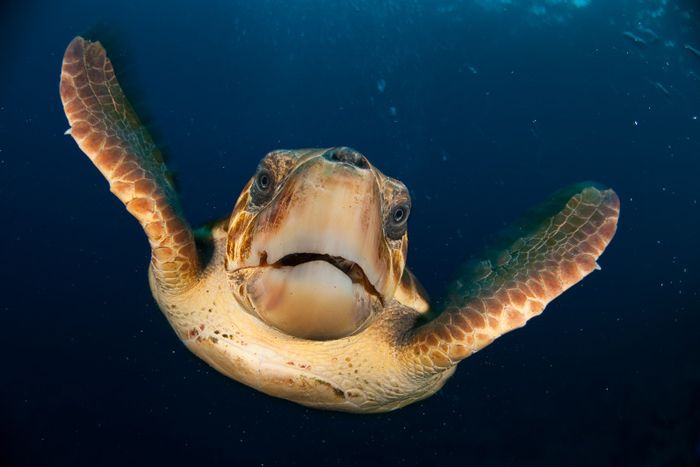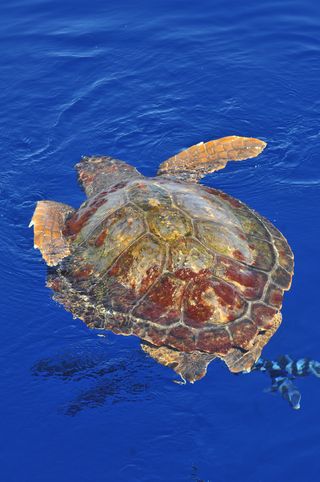
Largest-Ever U.S. 'Critical Habitat' Set for Loggerheads

Amanda Keledjian, a marine scientist at Oceana, contributed this article to Live Science's Expert Voices: Op-Ed & Insights.
Earlier this month, sea turtles gained a huge victory when the U.S. federal government announced the largest designation of critical habitat in the nation's history for the loggerhead sea turtles on the Atlantic Coast and in the Gulf of Mexico. The National Marine Fisheries Service and the U.S. Fish and Wildlife Service made a joint announcement last week to designate 685 miles of beaches and more than 300,000 square miles of ocean as protected habitat for the creatures and their ecosystem.
Loggerheads spend most of their lives in the water, where they migrate tens of thousands of miles over their lifetimes to feed, grow, mate and nest. Unfortunately, fulfilling those basic needs puts them in harm's way.
From birth, hatchling loggerheads are already at risk from being trampled by beach traffic or disoriented by artificial lighting, as they are hardwired to navigate by the moon's light. If they safely reach the water, they find cover and food in mats of Sargassum algae, but must be careful not to ingest the millions of small pieces of plastic that also accumulate in the floating plants. As the young sea turtles grow into adults over the next twenty years, they can be captured in fishing gear, hooked on longlines, hit by speeding boats or coated in oil. Threatened by human activities throughout their entire lives, it is no surprise that this and other sea turtle populations have precipitously declined over the last decades. [Lawsuit Could Save Thousands of Sea Turtles (Op-Ed)]

But, there is hope. Evidence shows that species with designated critical habitat are twice as likely to show signs of recovering compared to species that do not have critical habitat. After more than two decades, loggerhead sea turtles will finally have designated critical habitat, as is required under the Endangered Species Act. The U.S. habitat designation — the largest in history for any species — is a huge victory for the Northwest Atlantic population of this species, and comes as a result of a 2013 lawsuit brought against the government by environmental groups, including Oceana.
The new critical habitat spans beaches from North Carolina to Mississippi, including 84 percent of all known nesting sites for the Northwest Atlantic population. The designation also includes large ocean areas where Sargassum is known to exist, drawing hundreds of young sea turtles. Unfortunately, the designation does not include any critical habitat areas for the endangered North Pacific Ocean loggerhead, though they are known to feed in California waters.

While the designation will not change any public access to those areas or create wildlife preserves or refuges, all federally authorized activities (excluding the military) must undergo additional analyses to ensure that they will not reduce the amount or quality of the habitat available to sea turtles. [Loggerhead Turtles Swim to Safety (Images)]
Sign up for the Live Science daily newsletter now
Get the world’s most fascinating discoveries delivered straight to your inbox.
This critical habitat designation has been a long time coming and will help turn the tide for these amazing animals. Sea turtles have been roaming the seas for more than a 100 million years, and these protections will help ensure they will continue to do so for generations to come.
Follow all of the Expert Voices issues and debates — and become part of the discussion — on Facebook, Twitter and Google +. The views expressed are those of the author and do not necessarily reflect the views of the publisher. This version of the article was originally published on Live Science.












